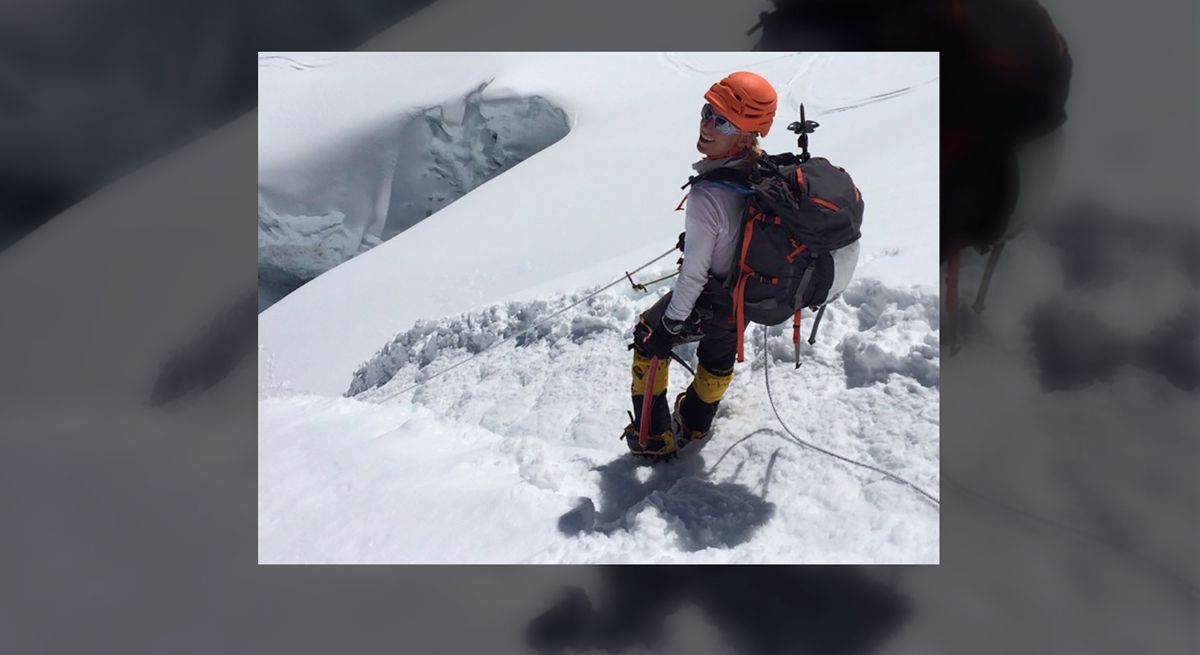When mountaineer Lisa Thompson was diagnosed with breast cancer two years ago at age 44, she didn’t spend days cooped up in bed, and she didn’t dwell on all the things cancer might leave her unable to do.
“My first thought was not, well, I guess I can’t climb. It was, well, I’m going to find a way to do it and still be healthy and not compromise my treatment,” recalls Thompson. “I was really determined that cancer wasn’t going to steal that dream from me.”
That determination led Thompson to make a bold decision: after her treatment, she would summit Mount Everest. True to her word, she made it to the top a year later. Her inspiring journey was chronicled in Sports Illustrated's virtual reality documentary Capturing Everest.
Here, she tells Health about how she handled the shock of a life-threatening diagnosis, her resolution to take on Everest, and how battling cancer helped her prepare for one of the most challenging mountains on the planet.
A surprise diagnosis
It was a routine mammogram—one Thompson had been putting off—that led to the discovery of her cancer.
“After my mammogram, my radiologist—not the technician—walked into the room and quietly sat next to me,” recalls Thompson, who lives in Seattle. “I knew something was wrong.” She soon learned that the type of breast cancer she had was Stage 1 ductal carcinoma in situ. To treat it, she wouldn’t have to undergo chemotherapy or radiation, but she would need a bilateral mastectomy and follow-up surgeries.
The shocking news, “really provoked me to reevaluate my priorities in life,” she says. “I realized that if I was ever going to climb Everest, I should do it now,” she says. In the days that followed, Thompson found a cancer surgeon who understood her athletic lifestyle, and with the support of that doctor, she began simultaneously training for her climb and preparing for cancer surgery. In fact, she trained up to the day of her mastectomy.
RELATED: 22 Ways to Help a Friend With Breast Cancer
Training during treatment
In the best of circumstances, training to climb a mountain like Everest is grueling. Thompson’s workouts consisted of a mix of cardio, strength, and bodyweight training, as well as steep hikes while carrying a pack that weighed 40% of her bodyweight. She went on long trail runs and did hundreds of bodyweight workouts like sit-ups and squats.
After her mastectomy and three subsequent surgeries, however, she couldn’t even raise her arms, let alone run, for weeks. “It was hard for me to imagine that the day of my surgery, I literally woke up and worked out as hard as I ever had, and two days later I couldn’t lift my arms over my head.”
Determined to continue training as much as her body would allow, Thompson would walk briskly on a treadmill with her arms in slings to keep them from swinging. As she recovered more strength, her doctor gave her the okay to go on her first post-surgery trail run. She was so excited, she couldn’t sleep the night before, she says.
Besides finding an understanding surgeon, Thompson says that having mountaineer Scott Johnston as her training coach was serendipitous. Johnston’s wife, it turned out, had also battled the same type of breast cancer.
RELATED: 12 Things That Probably Don't Increase Breast Cancer Risk
“He had firsthand knowledge of what that surgery and experience was like, and he helped me be healthy and listen to my body and train while I was being treated,” Thompson remembers. “On those days when I was like, I don’t think I can do a pull-up anymore because I feel like my arms are going to fall out of their sockets, he would take it one step at a time, and he understood what my concerns were.”
Starting the summit
Three weeks after her final cancer surgery, Thompson quit her corporate job and left the U.S. for Nepal in March 2016. She started her journey in a tiny village called Lukla, and began trekking toward the mountain with her group.
“Gradually as you’re walking along these dusty trails, you start to see these incredible mountains in the Himalayas,” she says. “That’s when it starts to hit you, I have to get from here to the top of that. It’s a very humbling feeling.”
To get our best wellness advice delivered to you inbox, sign up for the Healthy Living newsletter
Once climbers reach Everest, they spend time getting acclimated to the altitude. For about a month, Thompson moved around different base camps, climbing up and down the mountain and adjusting to high altitudes. Then, once the weather conditions were right, she and her group began their ascent. After months of training and cancer treatment, Thompson reached the 29,035-foot peak of one of the world’s mightiest mountains.
That was last May. Now, Thompson—who remains cancer-free—has her sights set on K2, another treacherous mountain on the border of China and Pakistan. If she succeeds, she will be the first American woman to summit K2.
“Standing at the top of Everest is a huge moment in anyone’s life,” she says. “I know now that I am much stronger and braver than I ever thought I could be, and the challenges life throws at me aren’t meant to stop me from being successful, they’re just a part of the process.”
